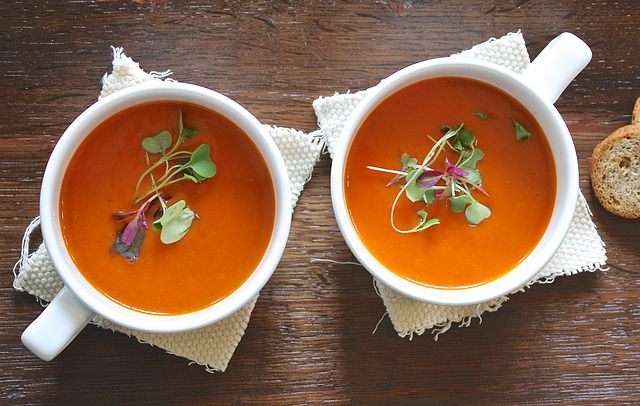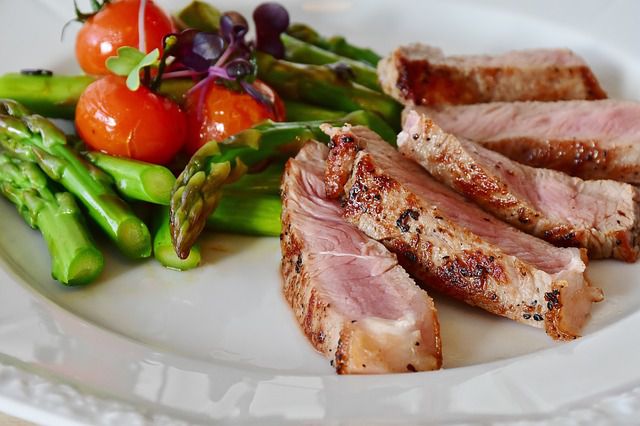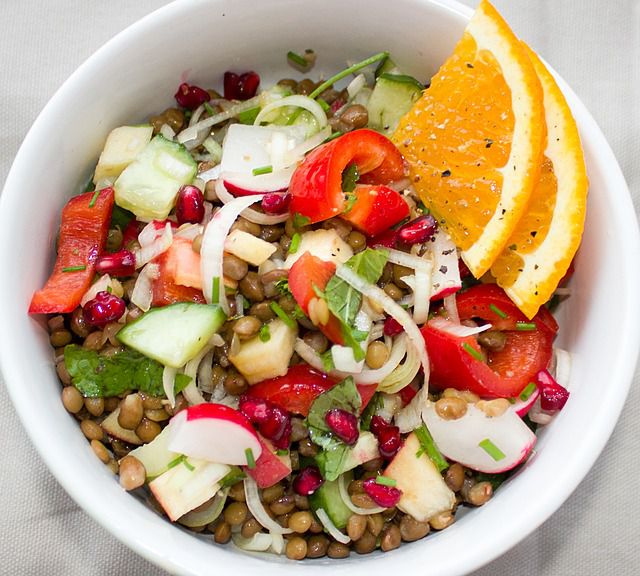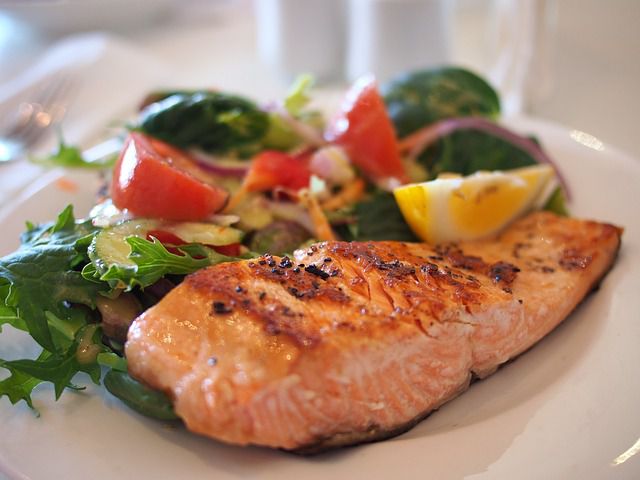Diets…so many to choose from! A shortage of trends doesn’t seem like something we’ll have to worry about anytime soon…if ever. And most promise similar results including weight loss, increased energy, and getting fit. This can lead to some serious confusion about what to eat.

With so many to choose from the question becomes…which diet is best for you and which ones produce REAL results?
Don’t worry, we won’t spend an ounce of energy (pun intended) on gimmicky fad diets since I like to believe that most people are able to sniff those out pretty quickly. Instead, let’s dive into 10 popular diets that work – yes actually work (if you apply them) and the pros and cons of each.
The goal is that by the time you’re done reading this you will have gained some insight and clarity as to which approach may work best for you based on the results you are looking for.
D. I. E. T.
Confession: I’ve never been a fan of the word D-I-E-T and it’s not because I’ve never needed to be on one. It’s safe to say the gimmicks pretty much ruined the whole dieting thing for me. But there are some good ones out there rooted in tradition and backed by science, that have swerved me to start a fresh relationship.
Naturally while a diet can be a great way to serve a specific purpose such as losing weight, I always like to keep in mind that the best diets are not really diets rather, ways of eating that help you to create relationships with food that you can then turn into a healthy lifestyle habit.
Because really, if the goal is to find a way of eating that is sustainable for your lifestyle – something you will actually stick to instead of a short term fix, something you actually enjoy, then it will no longer be a diet but a long term way of life that helps you feel your healthiest. So in no particular order…
10 Popular Diets that Will Actually Work For You
Whole Food Diet
A basic way of eating, a whole food diet consists of foods in their whole form with minimal processing – single-ingredient foods. The guidelines recommend filling half your plate with veggies and fruits, one-quarter with whole grains, one-quarter with protein (plant or animal), and some healthy fats/oils in moderation. Basically, if it doesn’t come from a plant or a farm, it’s not worth eating.
Pros
A simple and healthful approach to clean eating that is easy for most people to follow and helps you avoid the nutrition deficit in packaged and processed foods, and sugars. A whole food diet is one of the most sustainable long term habits that can contribute to a healthy lifestyle.
Cons
Depending on the individual some whole foods may not be beneficial and may even possibly be problematic for specific health issues. There has been enough research to show how grains trigger inflammatory responses in autoimmune conditions, for example.
And while the guidelines do include healthy fats, it’s almost as if they’re kind of an after thought – the last thing you should fill your plate with and in moderation. Plenty of research has proven that high intake of healthy fats such as avocados, nuts, seeds, oils such as coconut, avocado, flax and olive oil, and grass-fed butter is extremely beneficial to fuel the brain, stabilize moods, keep us satisfied and full much longer, and to help burn fat.
Learn more about a whole foods diet here.

Ketogenic Diet (Keto)
From celebs like Halle Berry swearing by it to keep her diabetes in check, melt away fat, and slow aging – to your average person, there’s a pretty good chance you’ve heard about keto or the ketogenic diet.
Whether people are aware that it’s benefits are backed by plenty of solid research or look at it as just another fad diet, you see or hear it popping up everywhere right now. Keto is also referred to as LCHF (low-carb-high-fat) because it centers around very low carb, high fat, and moderate protein intake.
There’s been enough research proving that healthy fats are essential to the body and actually trigger it to burn more fat. The good news is, with keto you can eat tons of fat! Grass-fed butter and meats, eggs, bacon, full fat dairy, fish, oils like avocado, coconut and olive oil, and nuts and seeds are welcomed.
The quality fat and protein in these foods combined with low carb fibrous leafy greens and veggies like cauliflower, broccoli, and asparagus, insures you feel satisfied and full. And if you are vegetarian or vegan there are plenty of meatless and dairy free keto meals to be enjoy.
If you are already at your healthy weight and eating keto for the benefit of overall health, or if you are trying to manage or possibly reverse a health condition, there really isn’t a need to count calories as long as you keep your macros in check which is fairly easy to do with apps like Cronometer. That said, if weight loss or getting lean is the goal, it is recommended to track your macros and calories.
Reducing the carb load on your body to 20 g or less per day and not feeding it sugar allows the body to reach a state of ketosis where it burns fat as an alternative fuel source to sugar, insulin levels decrease, and management of symptoms of chronic conditions becomes possible.
In fact, keto’s roots began in the 1920’s as a highly effective way to treat epilepsy in children. Since that time studies have shown numerous health benefits of a ketogenic diet such as:
- Management and reversal of Type 2 Diabetes
- Improved brain function and help in prevention of Alzheimer’s
- Improved quality of life and reduced symptoms of Parkinson’s
- Optimized cholesterol levels, improved blood pressure, and reduced risk of heart disease
- Improved fertility and reversal of PCOS
- Reversal of fatty liver disease
- Deprivation of fuel (glucose) for cancer cells
- Reduced migraine symptoms
The bottom line is that the benefits of keto have been scientifically proven enough that it is used as a treatment protocol in many cases of people suffering from some chronic diseases.
It is of course recommended that you check with your doctor before starting the ketogenic diet, especially if you have a chronic condition that may require levels of certain biomarkers to be monitored.
Pros
If boosting brain function, increasing energy, decreasing inflammation and pain, increasing fat loss and muscle mass is what you are going for, a ketogenic lifestyle may be for you. It’s also great for beating sugar cravings. And if you’re looking to lose weight rather quickly this low-carb high-fat lifestyle can help you accomplish that – it’s actually one of the most quick weight loss diets that work.
You will often hear of keto referred to as a “carb-restricted” diet which may sound like deprivation. Yes, the carbs are really low but for most people it makes them feel so good that they don’t mind, and trust me, hungry or unsatisfied is the last thing you feel when eating keto.
Cons
Keto takes quite a bit of diligence. So if giving up things like breads, cereals, pastas, tortillas, or any other grain with high carbohydrates, starchy vegetables like potatoes, and sugars including refined and natural sources sounds like absolute torture, this may not be the best diet for you.
Keep in mind that many keto recipes include fatty meats, bacon, full fat dairy, and eggs, and the importance of the quality of these types of foods is not always emphasized. So you really have to take it upon yourself to be diligent about organic, grass-fed, nitrate-free, and pasture raised sources.
Tracking your macros is necessary to reach and maintain ketosis which may include weighing and measuring food, and for some people this is either too frustrating or time consuming. And initially you may have less gusto during work outs, but once your body adjusts to low carbs many people experience better overall physical and mental performance.

Paleolithic Diet (Paleo)
Paleo or the “ancestor diet” focuses on eating only what our hunter-gatherer ancestors ate. A plate with protein (animal or plant based), fat, and veggies is what a typical paleo meal looks like. The plan ditches dairy, grains, legumes, refined sugar, flour, potatoes, and processed foods, and focuses on good quality meat, seafood, eggs, veggies, fruits, nuts, seeds, and healthy fats.
It’s similar to keto but since you’re not trying to maintain ketosis there isn’t a need to monitor carbs as closely, making it a more moderate approach and a little easier for many people to turn into a sustainable habit. And if you don’t want to give up sugar entirely, things like raw honey, dates, maple syrup, coconut sugar, stevia, and monk fruit are all paleo approved.
Pros
Paleo is a pretty straightforward way of eating and another one of the low-carb diets that work. If kicking processed foods to the curb and filling your plate with whole foods that can help lower inflammation, aid with digestive disorders and reaching a healthy weight, and support things like healthy blood pressure, cholesterol, and glucose is your goal, paleo may be the way to go.
Eating paleo generally doesn’t require counting calories or macros which may be easier for people with extremely busy lifestyles or who travel a lot.
To make things easier, Primal Kitchen also has a line of paleo/keto/whole30 friendly dressings and marinades, condiments, avocado oil, nut and seed and protein bars that are convenient and delicious.
Cons
Because paleo doesn’t really involve specifying portions or calories of allowed foods it can be easy to overeat some of them, like nuts for example. While the fat and protein in nuts is beneficial in moderation, you can load up on carbs real quick if you have too many.
The list of dietary do’s and don’ts may be problematic for some people to sustain long term and this may not be the best diet for hardcore athletes who run best on fuel from carbohydrates.
Whole30
It’s in the name – whole foods for 30 days. The goal of whole30 is to clean up your diet by removing processed foods and replacing them with whole foods for 30 days. The idea is to reset the body and create a lasting habit of eating real food including veggies, fruits, nuts, seeds, healthy fats/oils, eggs, fish, meat, and poultry. Essentially this diet is paleo minus even the natural sugars like honey, dates, and maple syrup.
You are also only supposed to weigh yourself and take measurements before and after the 30 days, not during. Not focusing on this aspect encourages you to not overlook the other lifelong benefits the plan has to offer and to create a healthy relationship with food and your body.
Pros
Like paleo, whole30 doesn’t require counting or calculating, just moderate portions of whole foods for 30 days. The accountability of a 30 day goal seems reasonable and doable for most people. If you want to reboot your system and create a new relationship with food this could be the diet for you.
Cons
Similar to paleo, peoples versions of how much of certain foods to eat varies and when it comes to the freedom to eat approved foods without counting calories, some people can tend to go overboard.
There is no room for “slip ups.” On the Whole30 website it states that because at the core it is an elimination diet, “even one bite of pizza, one spoonful of ice cream, one lick of the spoon mixing the batter within the 30-day period and you’ve broken the “reset” button, requiring you to start over again on Day 1.”
For many people this can be quite discouraging and even set people up for failure as I don’t know too many people that don’t have “slip ups” when trying to implement a new healthy lifestyle habit. The idea of perfection just isn’t sustainable or realistic.

Plant-Based Diet (Including Vegetarian)
On a plant-based diet you consume whole, unrefined, or minimally refined plants. So, in other words, it’s based on veggies, fruits, tubers, whole grains, and legumes. Meat, poultry, seafood, dairy, and eggs are either excluded, if you are a total vegetarian OR they are eaten in small amounts making it non-vegetarian. Refined flours, sugars, and oils are avoided.
Pros
If you are looking to reduce inflammation, improve digestion, and feel lighter and more vibrant this diet might be your thing, as most plant-based foods are naturally high in nutrients including vitamins, minerals and antioxidants, and anti-inflammatory properties.
When planned right, colorful plant-based diets are a nutritionally sound way of eating that allow the body to thrive and many studies have shown them to reduce risk of, and even reverse obesity, cardiovascular disease, high blood pressure, diabetes, and some forms of cancer.
Cons
If you are used to eating meat the switch can be tough at first. But don’t worry – there are plenty of delicious satisfying plant-based recipes for just about every taste.
It can be a little tricky to get iron, vitamin B12, and vitamin D from plant-based foods, so it’s important to keep an eye on your levels and supplement if necessary.
Vegan Diet
A vegan diet takes vegetarianism a step further in that all animal products are excluded including dairy, eggs, and honey. Nutrient-rich veggies, fruits, whole grains, legumes, nuts, seeds, and healthy fats and oils are staples on a vegan diet done right.
This is a diet that tends to get frowned upon by non-enthusiasts, but for dedicated vegans it’s a diet that is deeply rooted in legitimate concern regarding the inhumane treatment of animals and the depletion of our planet’s resources – which really no one can claim is a bad thing.
Before we get into the pros and cons, I think it’s important to address the cost factor of eating a vegan diet because it can be a pro or con based again on whether you are doing it right.
There is a misconception that veganism is an expensive way to eat. The truth is that produce (even organic) and other vegan staples cost less than quality meats, eggs, dairy, and seafood, so it is possible to actually save money eating vegan the right way. On the other hand, all the processed and packaged convenience vegan foods can add up pretty quickly and definitely become an expensive way to eat.
Pros
If reaching a healthy weight is the goal, a vegan diet is another weight loss diet that works, and along with other plant-based diets there is the ability to reduce the risk of, and reverse health conditions. Plus choosing to make a positive impact on the planet and supporting the ethical treatment of animals is a rewarding feeling.
Cons
Like vegetarians, it’s important when eating a vegan diet to watch iron, vitamin B12, and vitamin D levels and supplement if necessary. You also have to be careful not to get caught up in the processed and packaged vegan food craze – not only is it expensive but most of it is devoid of any real nutrients.
This pertains more to the moral side of things, but because it is a diet rooted in strong beliefs, some vegans can come off a little propaganda-ish and even judgmental of those not following the same lifestyle. On the flip side, some people stereotype vegans as tree-hugging quacks gone overboard with their love of animals. Prepare for no shortage of stereotypes in the vegan world.
Still one of my favorite reads on the Vegan Diet and Lifestyle: The Kind Diet

The Mediterranean Diet
If a long lifespan and increasing your chances of living past the age of 100 sounds appealing, try eating a diet primarily of fish, olive oil, healthy fats, legumes, whole grains, nuts, and fresh veggies and fruits. At least that’s what people in the Mediterranean do, which is why this way of eating has been coined the Mediterranean diet.
With it’s emphasis on eating like people in the “Blue Zones” studies have shown that this primarily healthy fats and veggie based diet promotes brain health and slows the rate of cognitive decline, promotes heart health, weight loss and increased longevity, and protects against chronic diseases including certain types of cancers.
Pros
The Mediterranean Diet consistently makes it to the top of the lists as the best diet overall for most people and is considered one of the most popular diets of 2018. The appeal is that it’s a pretty convenient way of eating that you can follow for life without having to constantly restrict calories or give up foods you really love.
You can even have a glass of red wine each day, while most other diets tell you to avoid alcohol.
Since fats and fiber-packed foods are filling you should feel satisfied and hunger shouldn’t be a problem on this diet.
Cons
Some of the staple foods consumed on the Mediterranean Diet such as seafood, olives, and nuts can be a little on the expensive side.

Flexitarian Diet
According to U.S News the flexitarian diet also made the 2018 list of the top diets that work, coming in at #3 out of the 40 top diets ranked by a panel of health experts. Just like it sounds, flexibility is at the core of this diet. The emphasis is on high amounts plant-based foods including veggies, fruits, nuts, seeds, whole grains, and plant-based proteins. Occasional protein from animal sources is welcomed if it feels right for your body. In the end, this is all about finding a way of eating that is right for you.
Pros
The idea of a flexitarian diet is not to take away things but to add different foods, making it a good choice for those who desire to introduce more healthy plant-based foods into their lifestyle but also prefer not to follow a rigid structure, or remove things like natural sugars and alcohol in moderation for example.
If tuning in to how your body responds to the way you’re eating and making adjustments accordingly sounds like your thing, this plan certainly allows for the freedom to do so.
Cons
A flexitarian diet can take a little patience, and mind-body awareness to find the right fit for you, so this may not be the best way of eating for those who prefer a more structured diet.
Gluten-Free Diet
Going gluten-free can seem like a trendy thing to do and it’s a diet that has gotten increasingly popular lately. But for those with celiac disease (gluten intolerance) and those with gluten sensitivity, this way of eating is critical in order to feel well and be in good health.
In this case all grains including gluten such as wheat, barley, rye, spelt, farro, and kamut must be avoided. Whole foods are at the center of this diet including fresh fruits and veggies, beans, legumes, nuts, some seeds, seafood, meat, poultry, and dairy. And of course there are some gluten-free grains that are okay to eat.
See what you can eat when gluten-free here.
Pros
Those who suffer from digestive disorders, chronic inflammation, IBS and leaky gut can greatly benefit from a gluten-free diet. Removing gluten from your diet can also attribute to more energy, less brain fog, and weight loss or maintaining a healthy weight.
Studies have shown that a gluten-free diet in children with Autism helped to decrease gastrointestinal symptoms and behavioral disorders, and led to improvements in physiological symptoms and social behaviors.
Cons
For many people who have no choice but to remove gluten because of a health condition it’s extremely difficult and frustrating not only physically, but also mentally. Switching to this lifestyle can be very intimidating and requires an entire dietary overhaul that can feel quite overwhelming at first.
Like with vegetarian and veganism, It can get easy to get caught up in the packaged gluten-free food craze – many of which are devoid of any real nutrients. It’s also not uncommon for there to be a high amount of sugar in many gluten-free baked goods and snacks.
It can be tricky to find things to order when eating out, but more so in the past. More and more restaurants are offering really tasty gluten-free options now, and even quick eateries like pizza places have gluten-free crusts.

Intermittent Fasting
This last one is not so much of a diet as it a method. Fasting. It’s nothing new to the many cultures who have been practicing it since the dawn of time. Research shows they were on to something pretty good. Fasting can heighten focus, promote weight loss, regulate insulin resistance, and increase longevity.
Enter intermittent fasting – the latest fasting trend. Many people apply this strategy while on the keto diet. So how does it work?
The goal is to increase your fasting window, meaning the time you last ate at night to the time you first eat the next morning. The time you take to break your fast (it is recommended to start with a smaller window and build up over time) can vary, but a 14-20 hour fast is a good general guideline to go by.
Keep in mind this is not about reducing your caloric intake but rather consuming all your calories during the window of time that you aren’t fasting, so your meals will most likely be larger, depending on your normal daily caloric intake. And drink, drink, drink lots of water while fasting, especially first thing in the morning.
There are no hard and fast rules when it comes to this type of fasting – the goal is to let your body rest for longer periods of time, kinda like mini vaca’s so to speak. So, you can go at this with flexibility and choose to do it on certain days only, or even just start with one day and see how it makes you feel. Some people find they really enjoy it and end up incorporating it into their everyday life.
Pros
Studies have shown that Intermittent fasting has the ability to help you lose weight and belly fat, reduce insulin resistance and lower risk of type 2 diabetes, promote brain health and reduce risk of cognitive decline, reduce inflammation, and increase longevity. All good reasons to give it a try.
And if you’re into fitness or wanting to maintain and encourage muscle growth, intermittent fasting can be really beneficial. It compliments keto and carb cycling very nicely. You can alternate fasting and training days to optimize energy, endurance, and recovery times.
Cons
Initially, fasting is not an easy thing to do and requires a certain amount of dedication. In the beginning it can “mess with your head” and throw things like hunger pangs and cravings at you. This can cause people to get discouraged and instead of drinking lots of water to get through it, they give up.
The Takeaway
As perfect as it would be, there is no one-size-fits-all diet. Depending on the person and condition, the diet you choose to implement will vary. Implementing a new lifestyle habit can be challenging and there probably isn’t one diet that you’re going to love everything about, but the best diet for you is one that has enough aspects that you will enjoy enough to stick to long-term.
All of these diets will work for you if you apply the guidelines because ultimately they all focus on consuming more whole food nutrient-dense options and limiting or ditching processed foods and refined sugars. From there each one just gets a little more specific.
Bottom line: A diet that is sustainable enough for you to make it a way of life is ultimately the one that will bring you the most lasting results.
And lastly, it’s always a good idea to check with your health care practitioner before making any major dietary changes, especially if you have a serious or chronic health condition.
P.S. Success stories welcome in the comments below! Happy eating : )))))
